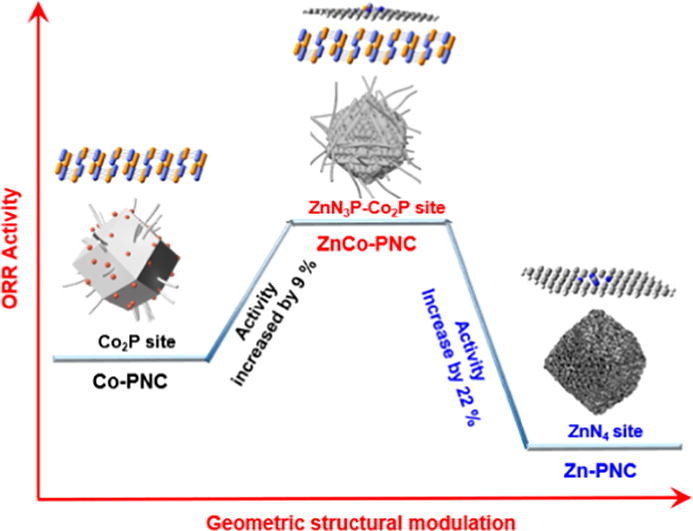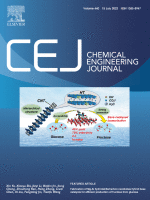Modulating the electronic structure of zinc single atom catalyst by P/N coordination and Co2P supports for efficient oxygen reduction in Zn-Air battery
In this work, we synthesized Zn single atoms with a configuration of ZnN3P in the carbon framework.

Technology Overview
A new precursor structure of PDAP spherical inside dodecahedron MOFs is fabricated. Zn single atoms are coordinated with N/P atoms to form ZnN3P catalytic sites. Co2P nanoparticles supports also promote the catalytic performance of Zn single atoms. ZnCo-PNC show a E1/2 of 0.91 V for ORR in basic solution, better than Pt/C (0.87 V). ZnCo-PNC based Zn-air battery device show better performance than IrO2@Pt/C couple.
Applications & Benefits
DFT results demonstrated that the synergistic promotion of Co2P supports and N/P coordination could reduce the energy barrier to proceed ORR on Zn single atoms from 1.85 to 0.79 eV. By using it as the cathode catalyst for zinc-air battery application, it shows respectable performance in terms of maximum peak power (237.3 mW cm−2) and energy densities (847 W h kg−1). The current strategy may open new horizons to design high performance single atom catalysts by using suitable supports and coordination environment to tune their activity.
Abstract:
Single-atom catalysts have emerged as effective active species for electrocatalysis because of their appropriate structural and electronic properties. However, the weight percentage of single metal atoms are generally below 5 wt% in the catalysts, limiting the population of catalytic sites and their performance. In this work, we synthesized Zn single atoms with a configuration of ZnN3P in the carbon framework. With the Co2P particles as supports (ZnCo-PNC), the generic Zn single atom catalysts with a content of only 2 wt% showed a half-wave potential of 0.91 V for oxygen reduction reaction in alkaline medium. This value is higher than that for pure P doped Zn and Co based catalysts (Zn-PNC of 0.69 V, Co-PNC of 0.82 V), and even better than commercial Pt/C (0.87 V). DFT results demonstrated that the synergistic promotion of Co2P supports and N/P coordination could reduce the energy barrier to proceed ORR on Zn single atoms from 1.85 to 0.79 eV. By using it as the cathode catalyst for zinc-air battery application, it shows respectable performance in terms of maximum peak power (237.3 mW cm−2) and energy densities (847 W h kg−1). The current strategy may open new horizons to design high performance single atom catalysts by using suitable supports and coordination environment to tune their activity.

Modulating the electronic structure of zinc single atom catalyst by P/N coordination and Co2P supports for efficient oxygen reduction in Zn-Air battery
Author:Tayyaba Najam, Syed Shoaib Ahmad Shah, Muhammad Sufyan Javed, Po-Tuan Chen, Chenghao Chuang, Ali Saad, Zhaoqi Song, Wei Liu, Xingke Cai
Year:2022
Source publication:Chemical Engineering Journal Volume 440, 15 July 2022, 135928
Subfield Highest percentage:99% Industrial and Manufacturing Engineering #3/336
https://www.sciencedirect.com/science/article/pii/S1385894722014267